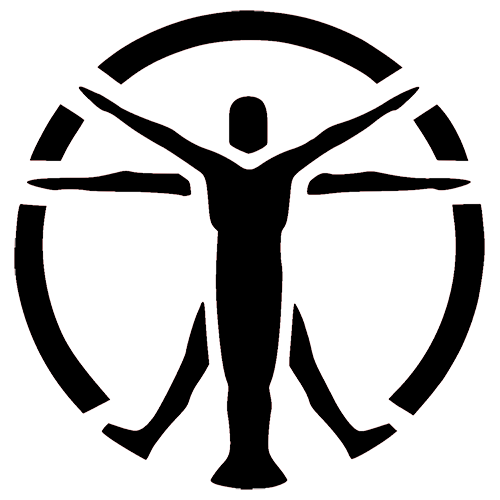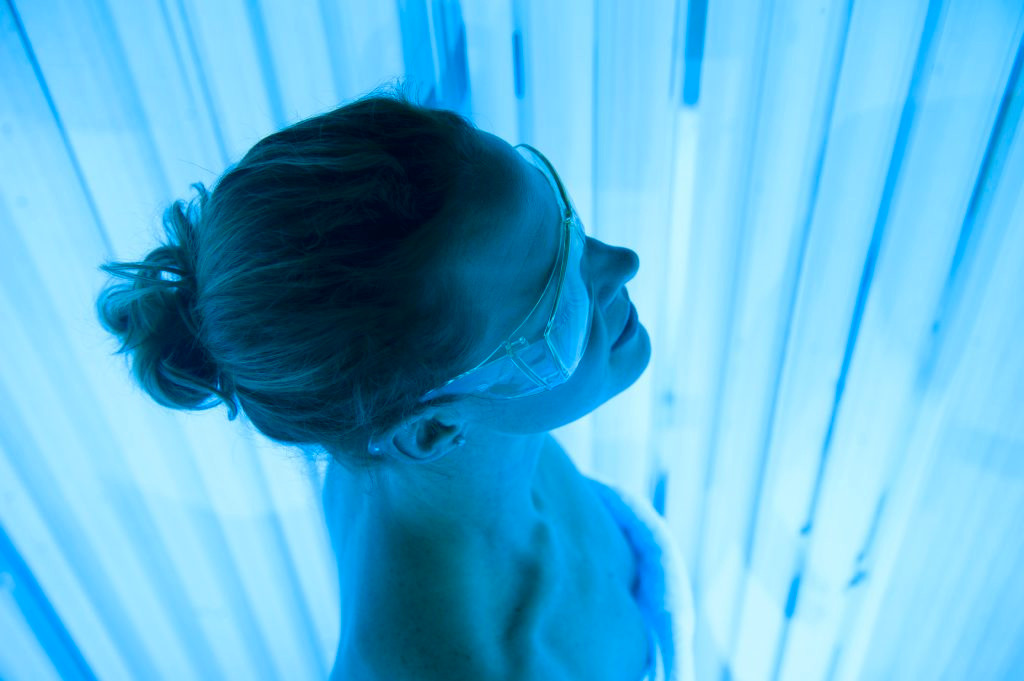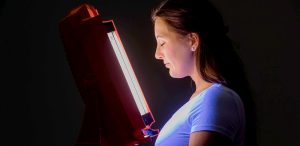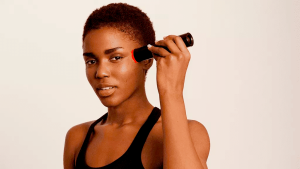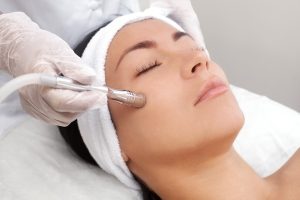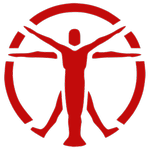Eczema, also known as atopic dermatitis (AD), is a common allergic skin disease that typically begins in childhood. According to the National Eczema Association, 31.6 million people (10.1%) in the U.S. have some form of eczema [1]. It is a condition that causes your skin to red, itchy dry, and cracked.
Anyone dealing with eczema knows how uncomfortable and irritating it can be sometimes. In severe cases it could affect daily life, even disrupt sleep. This is where light therapy can be applied. You can treat eczema with light therapy in dermatology clinics, spas, and even at home, but only under the supervision of a doctor.
The use of light therapy is still being studied by scientists, researchers, and other health professionals. Several studies have shown that light therapy can help to improve the symptoms of eczema, and even, in some cases, offer near-total clearing of the disease process. While light therapy can help improve symptoms of eczema, it also comes with some risks, for example causing burns or stings in some patients [2].
This article explores light therapy as a treatment for eczema. You’ll find information about how light therapy works, types of light therapy, as well as benefits and drawbacks of light therapy. Also, we take a look at the effects of light therapy on eczema based on scientific experiments, studies, and other respected sources.
What Is Light Therapy?
Light therapy, also called phototherapy, involves the treatment of different diseases in adults and children with the controlled delivery of ultraviolet (UV) radiation or visible light [3]. The light therapy treatment is used to treat mood and sleep disorders, hyperbilirubinemia and jaundice, some cancers and precancers, skin-related cancer symptoms.
Phototherapy is also used for the treatment of inflammatory skin diseases, includes:
- eczema (also called atopic dermatitis),
- psoriasis (raised, red, scaly patches on the skin),
- vitiligo (loss of color on patches of the skin),
- lichen planus (small bumps on the skin),
- cutaneous T-cell lymphoma (a type of lymphoma that appears as patches or scaly areas on the skin),
- itchy skin [4].

The origins of the use of light therapy can be traced back to 1500 BC when Hindus used natural sunlight (heliotherapy) to treat autoimmune skin diseases [5]. Based on clinical observations that sunlight improves many inflammatory skin conditions, different artificial UV light sources have been developed for the treatment of skin diseases.
To allow light therapy treatment to be as effective and safe as possible and allow your skin to gradually get used to the radiation, conditions such as the severity of the disease, co-morbidities, and age are taken into consideration. Treatment of eczema with light therapy typically involves 2 to 6 sessions per week and lasts from 4 weeks to 3 months in a specialized dermatology practice or hospital. The sessions usually take less than a minute in the beginning, and up to several minutes by the end of treatment [6].
How Does Light Therapy Work for Eczema?
UV phototherapy exerts a multitude of biological effects on the skin by penetrating the upper layers of the skin, which is shown in detail in the figure below [7]. Light therapy works because it reduces the number of cells called T-cell lymphocytes in the skin, which are involved in the inflammatory response and contribute to the symptoms of eczema [8]. Therefore, a reduction in the number of cells leads to less inflammation and the associated improvement in symptoms.
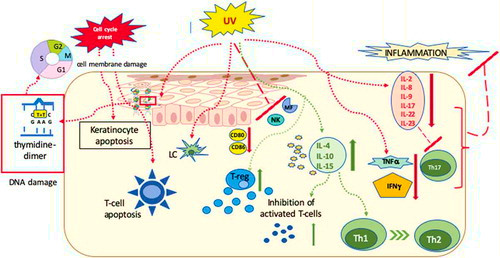
Light therapy is usually used in special cabins, called cabin-type light therapy, it is conducted with fluorescent lamps that emit light of a certain wavelength [9], such as UVB or UVA which will be presented in the next part of the article. Phototherapy gradually improves the skin after a few weeks of regular treatments. Once the skin is cleared or almost cleared, the itching decreases, eczema slowly subsides and the frequency of treatment decreases until the patient “weaned off” from phototherapy.
Types of Light Therapy for Treating Eczema
There are the main types of phototherapy: UVB (narrowband and broadband) and UVA (PUVA therapy) [10]. Sometimes other wavelengths of light known as UVA1 or combined UVA/UVB can also be used.
Narrowband UVB (NB-UVB)
Narrowband UVB (NBUVB) exposes the skin to UVB rays with a wavelength of 311 to 313 nanometers limiting the light spectrum, which helps reduce the risk of side effects [11]. NB-UVB is the most common, safest, as well as most effective phototherapy option used by dermatologists, as it’s more intense than broadband UVB.
Broadband UVB
Broadband UVB, also known as BBUVB, is rarely used in the treatment of eczema, the narrowband UVB is usually used instead. The difference between broadband UVB and narrowband UVB (NB-UVB) is that NB-UVB emits ultraviolet radiation with a shorter wavelength [12].
UVA
UVA (psoralen plus ultraviolet A), also called ultraviolet A (PUVA) therapy, uses long-wave UVA light in conjunction with a photosensitizing medicine called psoralen to make your skin more sensitive to light [13, 14]. It is more intense and has more side effects than broadband or narrowband UVB, and is usually only resorted to when treatment with others has been unsuccessful.
The most commonly used phototherapy is ultraviolet B (UVB), which comprises 77% of all phototherapy services [15]. The type, as well as the technique your doctor uses, will depend on the state you are in during treatment.
The Effects of Light Therapy on Eczema: Based on Scientific Research
Phototherapy is already actively used to treat eczema. Dermatologists have a wide range of phototherapeutic methods for treating eczema, from which they can choose according to the individual needs of the individual patient. Treatment decisions can be based on the effectiveness of some form of phototherapy for the specific stage of atopic dermatitis, i.e., acute and severe versus chronic and moderate disease activity.
In this part, we will present to you the results of scientific research on different types of atopic eczema.
Phototherapy of Chronic, Moderate Atopic Eczema
The most effective treatments in chronic and moderate atopic dermatitis are broad-band UVB, combined UVA/UVB, broad-band UVA, low-dose UVA1, and, in particular, 311-nm UVB phototherapy [16]. All of these treatments are considered relatively safe when used correctly, even if applied over a long time.
NB-UVB with a wavelength of 311 nm is considered an effective method of maintenance therapy in the initial phase of treatment of acute, severe exacerbation of eczema [17]. The therapeutic efficacy of UVB therapy for chronic moderate atopic dermatitis at a dose of 311 nm was demonstrated in a study conducted by S. A. George, D. J. Bilsland, B. E. Johnson, J Ferguson [18].
In this study, George et al. irradiated 21 patients with chronic moderate eczema with 50 100-watt TL-01 lamps equipped with reflectors, resulting in a UV output of 5 mW/cm2 and a maximum treatment time of less than 10 min.
As a result, it was concluded that 311-nm UVB therapy not only reduced clinical severity but also significantly reduced glucocorticoid use. These positive effects persisted in most patients 6 months after discontinuation of 311-nm UVB therapy. Six patients relapsed to >70% of their prephototherapy severity and the remaining 15 patients continued therapy and had a long-term positive effect.
*Click or hover to unblur the image

Phototherapy for Acute, Severe Atopic Eczema
UVA1 phototherapy is a highly useful method that is used as monotherapy for a limited period (about 10-15 exposures) [19]. It is most effective in treating patients with severe, acute exacerbations of atopic dermatitis, however, its use is not recommended for patients under 18 years of age.
The therapeutic efficacy of UVA1 irradiation in the treatment of patients with atopic dermatitis was first evaluated in an open study in patients with acute, severe exacerbations of eczema [20]. Patients were exposed to 130 J/cm2 UVA1 daily for 15 consecutive days. At the end of the study, patients treated with UVA1 were compared with patients treated with UVA/UVB phototherapy. Significant improvements in eczema symptoms were observed in patients treated with UVA1 therapy.
As a result, UVA1 phototherapy was found to be highly effective in rapidly stimulating clinical improvement and reducing elevated serum ECP levels. These results were confirmed and extended in subsequent studies, in which UVA1 therapy, compared with glucocorticoid treatment, was significantly better on day 10 with a decrease in clinical score.
Phototherapy of Atopic Hand and Foot Eczema
Local UVA-1 phototherapy is often used to chronic vesicular dyshidrotic hand eczema [21].
In an open pilot study, the palms and backs of hands of 12 patients with an acute exacerbation of their disease were exposed to 15 UVA-1 irradiations with a dose of 40 J/cm2 per day for 3 weeks. After 1 week, all but one patient reported marked relief of itching, and after the 3rd week, 10 out of the 12 patients showed significant clinical improvement.
For the treatment of atopic hand and foot eczema, also has been developed a UV-free partial body irradiation device (UV-free phototherapy) [22]. It causes rapid and lasting improvement in patients with atopic eczema of the hand and foot. The result of using this device can be seen in the picture below.
*Click or hover to unblur the image
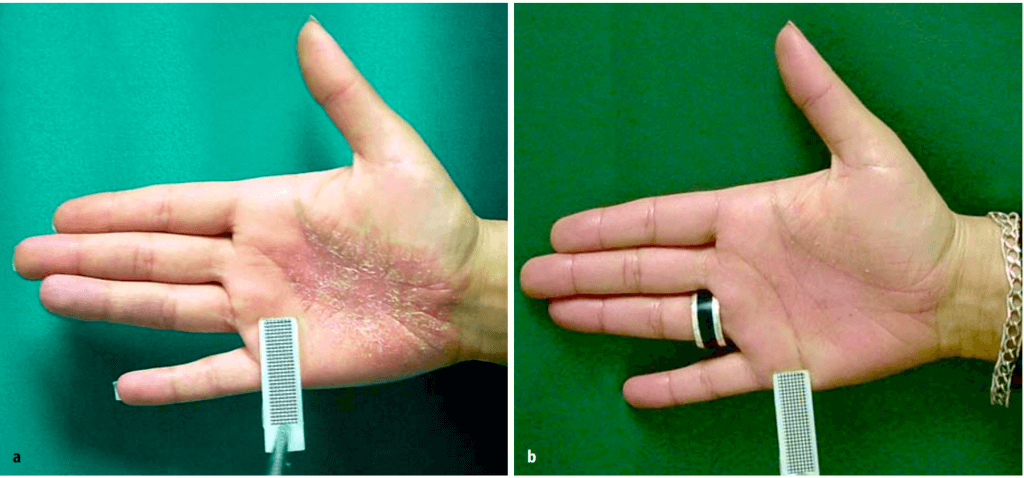
Source: J. Krutmann, A. Morita, Phototherapy for Atopic Eczema
Phototherapy for Pediatric Eczema
In children, light therapy is used only in the treatment of severe eczema, when other methods of treatment have no results or have a significant adverse effect on the child’s health [23]. The initial treatment lasts only a few seconds, and children quickly get used to the procedure. The parent can also stay at the machine and talk to the child.
Scientific studies show that narrow-band UVB light therapy is a safe as well as an effective way to treat children suffering from eczema.
In 2017, the study involved 30 children (4-14 years old), out of 30 patients, 90% had moderate eczema and 10% had severe eczema [24]. Narrow-band UV therapy was performed twice a week for three months. Patients were also monitored for 2 years to know the duration of remission after the end of therapy.
As a result of the study, the clearance of disease was seen in 90% of patients. The significant decrease in the at the 6th, 12th, 18th, and 24th sessions of treatment compared with the baseline level. The maximum number of patients achieved clearance at the 18th treatment session. The result of using narrow-band UVB light therapy for pediatric eczema is shown in the pictures below.
In the study, secondary outcomes were assessed with sleep recovery and itching reduction. There was itching and sleep loss also improved significantly from baseline to the end of therapy and even during years 1 and 2 of follow-up.
*Click or hover to unblur the image
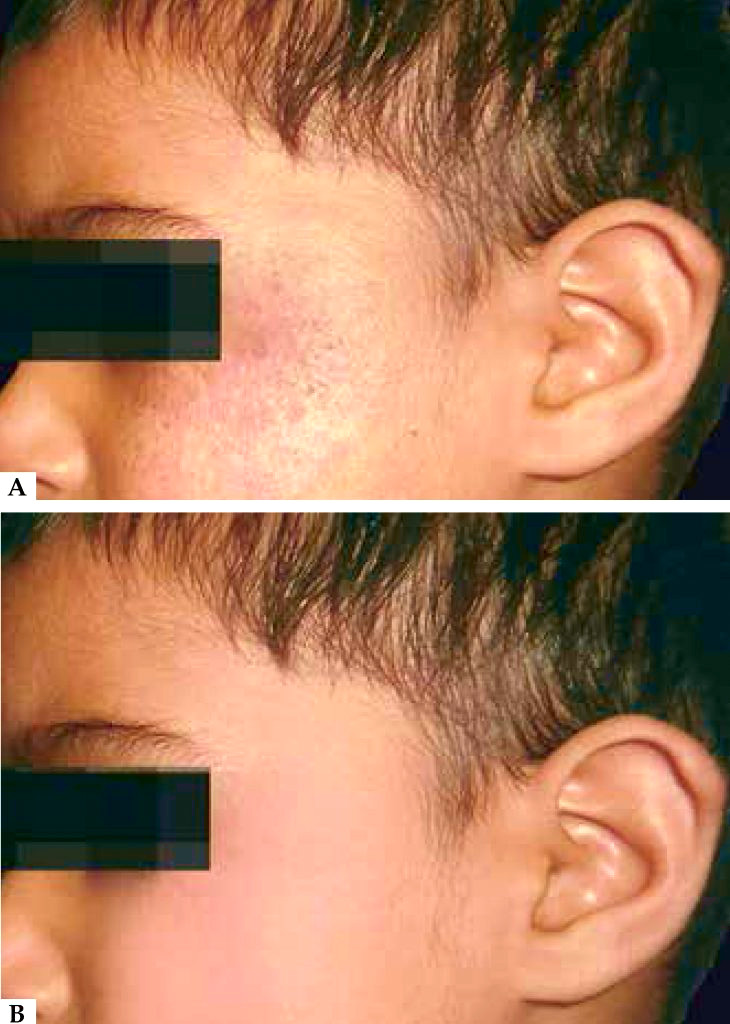
Source: Surabhi Dayal, Kalpana Pathak, Priyadarshini Sahu, Vijay Kumar Jain, 2017, Narrowband UV-B phototherapy in childhood atopic dermatitis: efficacy and safety
*Click or hover to unblur the image
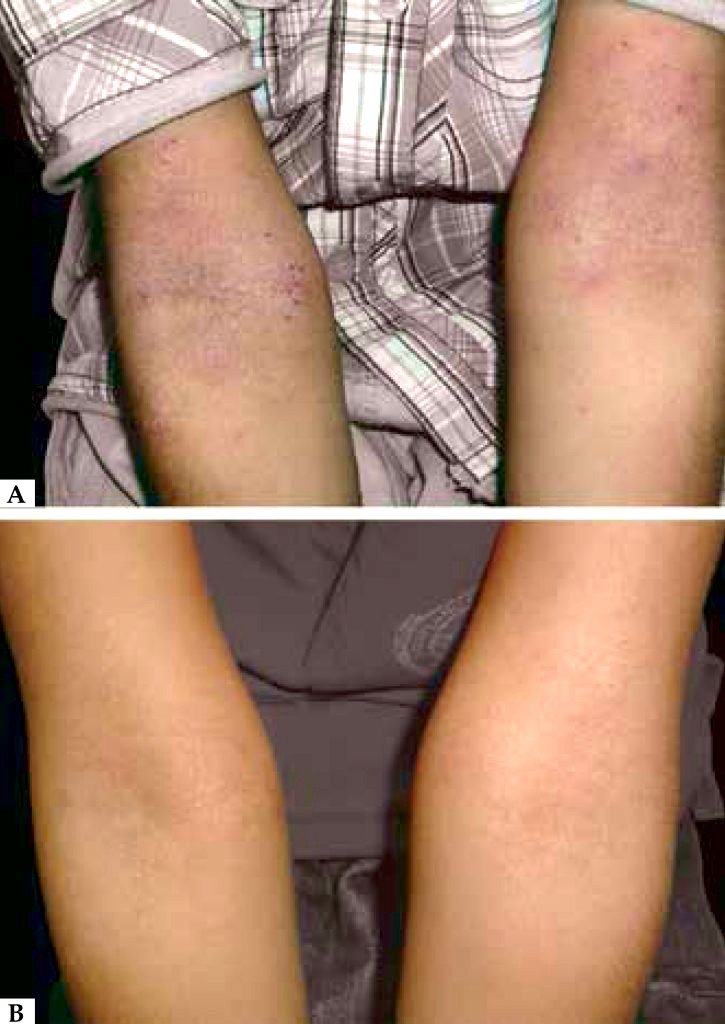
Source: Surabhi Dayal, Kalpana Pathak, Priyadarshini Sahu, Vijay Kumar Jain, 2017, Narrowband UV-B phototherapy in childhood atopic dermatitis: efficacy and safety
Potential Drawbacks and Risk of Light Therapy
Light therapy is a safe and effective way to improve symptoms of eczema, it has fewer side effects than many of the prescription medications used for eczema. However, it also comes with some drawbacks and risks.
When used for skin conditions, phototherapy is generally considered safe, but like all medical treatments, it has possible side effects. The most common side effects include [25, 26]:
- Red or dry skin.
- Sunburn and skin tenderness.
- Skin burns or stings.
It is normal for people to experience these side effects within 24 hours of treatment, they usually go away on their own within several hours or days after the procedure. However, to try to prevent this from happening, it’s recommended to use sunscreen before the treatment and apply enough moisturizing cream afterward. You also may be able to manage side effects by taking breaks during long sessions or changing the time of day you use light therapy.
While the following side effects can occur, there are some uncommon [27, 28]:
- Accelerated aging of the skin (e.g. freckles, age spots, wrinkles).
- Nausea and vomiting – if you use psoralen for PUVA therapy.
- Skin reaction that causes an acne-like outbreak.
- Skin cancer. All UV therapies, especially PUVA, pose a long-term risk of developing skin cancer. Therefore, before starting any UV phototherapy, a thorough evaluation should be performed [29].
To prevent side effects as much as possible, it is important to avoid sunlight on the day of treatment or to protect yourself from natural ultraviolet radiation by wearing sunglasses, appropriate clothing, and applying sunscreen. This is especially important for people who have taken psoralen. They should avoid exposure to natural sunlight during the rest of the day [30].
Remember, if you fall into these categories:
- Being pregnant or a nursing mother;
- Having a family history of skin cancer;
- Having liver disease.
You should avoid light therapy treatment or consult with your doctor or dermatologist.

Light Therapy for Eczema at Home
Home UV light therapy can be an alternative to hospital-based procedures. The key to home eczema treatments is consistency as well as quality home phototherapy machine. However, its use should be supervised by a doctor, who is experienced in eczema treatment.
There are the most common benefits of home phototherapy:
- Is cost-effective;
- High output lamps shorten treatment times;
- Eliminates time-consuming trips to the phototherapy clinic;
- Allowing patients to go directly from the shower or bath to the lights improves the treatment effectiveness;
- Makes it easier to keep to a treatment schedule – fewer missed visits and better results;
- In the USA, home UV phototherapy systems purchase is covered by many health insurance plans.
Home phototherapy is a safe and effective self-treatment option for skin conditions at home if the dosage is carefully controlled. However, not all dermatologists agree to control home phototherapy because of the possibility of side effects. Based on a scientific study, side effects of home therapy could include red skin (36%), blisters (1%), itch (8%), and dryness (1%) [31].
Conclusion
Light therapy is a popular treatment option for many conditions, including mood and sleep disorders, some cancers and precancers, hyperbilirubinemia and jaundice, as well as inflammatory skin diseases.
Despite potential drawbacks such as burns or dry skin, light therapy is effective and safe in treating eczema if proper precautions are taken. Light therapy on its own or in combination with other techniques is actively used to treat chronic, acute, atopic hand, and pediatric eczema.
With light therapy, you can also treat eczema at home, but you should previously consult with your doctor to make sure you are using light treatment correctly, getting the most benefit with the least side effects.
FAQs
👩🏻⚕️ What is light therapy?
Light therapy, also called phototherapy, involves the treatment of different diseases in adults and children with the controlled delivery of ultraviolet (UV) radiation or visible light. It’s used to treat skin diseases, mood and sleep disorders, hyperbilirubinemia and jaundice, some cancers and precancers, skin-related cancer symptoms.
💡 Is light therapy safe?
Light therapy is generally safe if it is carefully controlled by your doctor. The most common side effects of light therapy include red or dry skin, skin burns, sunburn, and skin tenderness. To prevent this, you can use sunscreen before the treatment and apply enough moisturizing cream afterward.
⌚ How long should I treat eczema with light therapy?
All treatment periods are individual and depend on your situation. It can usually take 6 to 8 treatments before your skin starts to get better.
☀️ Is light therapy the same thing as a sunbed?
It is important to know that tanning beds are not the same as light therapy. High tanning beds do not provide light therapy, and you should avoid using them to treat skin conditions. Excessive ultraviolet radiation damages skin cells and can lead to skin cancer. Therefore, light therapy is always performed under the supervision of a doctor in a hospital to minimize side effects.
🤰🏻Can I treat eczema with light therapy during pregnancy?
Light therapy is not recommended during pregnancy. Avoid any treatment involving methotrexate (Trexall, Rasuvo) or psoralen plus ultraviolet A (PUVA), as it may harm the fetus.
Sources
- National Eczema Association, Eczema Stats;
- American Academy of Dermatology Association, Eczema treatment: phototherapy;
- National Eczema Association, Prescription Phototherapy;
- Memorial Sloan Kettering Cancer Center, About Your Phototherapy Procedure – last update March 3, 2020;
- Lajos Kemén, Emese Varga, Zoltan Novak, 2019, Advances in phototherapy for psoriasis and atopic dermatitis, Taylor&Francis Online;
- Cologne, Germany: Institute for Quality and Efficiency in Health Care (IQWiG), Eczema: Light therapy and oral medications, NCBI – last update March 20, 2019;
- Lajos Kemén, Emese Varga, Zoltan Novak, 2019, Advances in phototherapy for psoriasis and atopic dermatitis, Taylor&Francis Online;
- National Eczema Society, Phototherapy factsheet, Factsheet last reviewed October 2018;
- Cologne, Germany: Institute for Quality and Efficiency in Health Care (IQWiG), Eczema: Light therapy and oral medications, NCBI – last update March 20, 2019;
- National Eczema Society, Phototherapy factsheet, Factsheet last reviewed October 2018;
- Cologne, Germany: Institute for Quality and Efficiency in Health Care (IQWiG), Eczema: Light therapy and oral medications, NCBI – last update March 20, 2019;
- Cologne, Germany: Institute for Quality and Efficiency in Health Care (IQWiG), Eczema: Light therapy and oral medications, NCBI – last update March 20, 2019;
- Cologne, Germany: Institute for Quality and Efficiency in Health Care (IQWiG), Eczema: Light therapy and oral medications, NCBI – last update March 20, 2019;
- National Eczema Society, Phototherapy factsheet, Factsheet last reviewed October 2018;
- Lajos Kemén, Emese Varga, Zoltan Novak, 2019, Advances in phototherapy for psoriasis and atopic dermatitis, Taylor&Francis Online;
- J. Krutmann, A. Morita, Phototherapy for Atopic Eczema, Springer;
- Krutmann J, Morita A (2001) Photo(chemo)therapy for atopic dermatitis. In: Krutmann J et al (eds) Dermatological phototherapy and photo diagnostic methods. Springer, New York, pp 93;
- George SA, Bisland DJ, Johnson BE, Ferguson F, 1993, Narrow-band (TL01) UVB air-conditioned phototherapy for chronic severe adult atopic dermatitis. Br J Dermatol 128:49 –56;
- J. Krutmann, A. Morita, Phototherapy for Atopic Eczema, Springer;
- Krutmann J, Czech W, Diepgen T, Niedner R, Kapp A, Schöpf E (1992) High-dose UVA1 therapy in the treatment of patients with atopic dermatitis. J Am Acad Dermatol 26: 225 –230;
- J. Krutmann, A. Morita, Phototherapy for Atopic Eczema, Springer;
- J. Krutmann, A. Morita, Phototherapy for Atopic Eczema, Springer;
- National Eczema Society, Phototherapy factsheet, Factsheet last reviewed October 2018;
- Surabhi Dayal, Kalpana Pathak, Priyadarshini Sahu, Vijay Kumar Jain, Narrowband UV-B phototherapy in childhood atopic dermatitis: efficacy and safety, An. Bras. Dermatol. vol.92 no.6 Rio de Janeiro Nov./Dec. 2017;
- National Eczema Society, Phototherapy factsheet, Factsheet last reviewed October 2018;
- Cologne, Germany: Institute for Quality and Efficiency in Health Care (IQWiG), Eczema: Light therapy and oral medications, NCBI – last update March 20, 2019;
- National Eczema Society, Phototherapy factsheet, Factsheet last reviewed October 2018;
- Cologne, Germany: Institute for Quality and Efficiency in Health Care (IQWiG), Eczema: Light therapy and oral medications, NCBI – last update March 20, 2019;
- Lajos Kemén, Emese Varga, Zoltan Novak, 2019, Advances in phototherapy for psoriasis and atopic dermatitis, Taylor & Francis Online;
- Cologne, Germany: Institute for Quality and Efficiency in Health Care (IQWiG), Eczema: Light therapy and oral medications, NCBI – last update March 20, 2019;
- Anoma Ranaweera, 2013, Home phototherapy, DermNet NZ.
